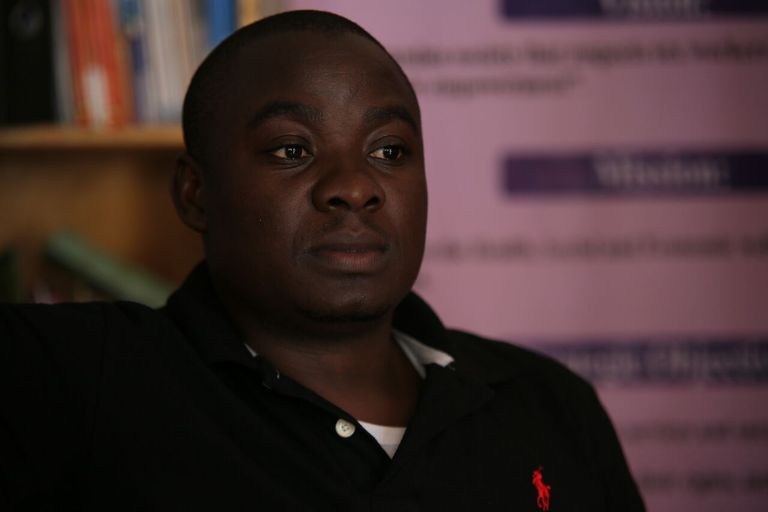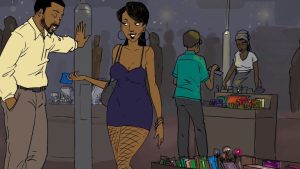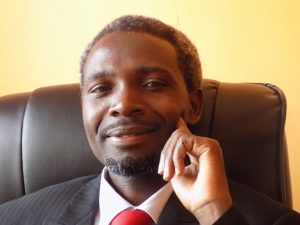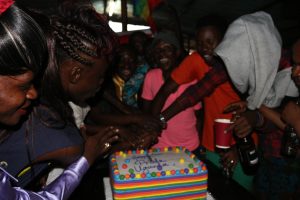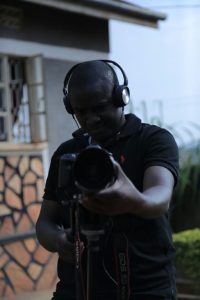
Vincent Kyabayinze, 31 is a Ugandan industrial artist who founded the organization, East African Visual Artists (EAVA) in order to use visual arts as a tool for human rights advocacy.
Kyabayinze joined the Ugandan gender and sexual minority movement in 2008 and became actively involved in 2009 during the resilient fight against the anti-homosexuality bill that had just been tabled on the floor of parliament. At the time, he was working with Spectrum Ugandan Initiatives and later joined UHAI-EASHRI as an intern. In 2011, Kyabayinze made the decision to establish East African Visual Artists to be able to employ the use of visual narratives to fight homophobia, transphobia, biphobia and all kinds of prejudice towards all sexual minorities in Uganda.
Together with his team at EAVA, Kyabayinze believes that visual narratives contain a deeper significance and can better make a narrative relatable for people who might not be able to read or even simplify it for the lay man. The visual storylines also intensify community members’ voices and give them a wider reception.
The messages developed vary depending on the area of interest and are packaged differently for a specified target audience; the team at EAVA makes sure the messages are well packaged to avoid being challenged by the different political dynamics in Uganda. All this is done with guidance from their legal advisors since the final work normally features in mainstream exhibitions. Kyabayinze and his team always avoid tagging and stereotyping people, well knowing this is the basis of human rights abuse in the country; they believe that a well-packaged documentary, art piece or play impacts a lot on people’s attitudes.
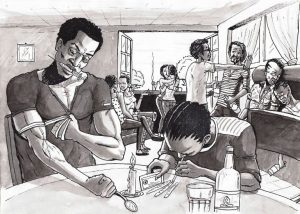
Kyabayinze confesses that being a student of history inspired him greatly to make his dream project a reality. He believes right from the era of evolution, art was greatly used as a mode of communication and he took on this fact to break the cycle and introduce a new face of advocacy in order to make his impact on the general public. He further says that when one looks at images about what happened a million years ago, they are easily convinced of the happenings.
“When someone sees something, it becomes easy for that person to relate to it because a great number of people prefer looking at illustrations than reading,” Kyabayinze explains.
In its 5 years of existence, East African Visual Artists has helped bridge the gap between the Ugandan sexual and gender minority community and the general population. The latter is responsible for most of the problems that an LGBTI or sex worker experiences in his/her day to day life and that is why EAVA has tried all possible means to package their information appropriately before it is passed on to the general public. There are many questions that arise from the public after receiving this information and EAVA takes the onus to address these; it is through such interactions that EAVA has noted the change in people’s sensitivities towards LGBTI/sex work issues.
In comparison to a few years ago,, Kyabayinze is happy about the impact of this art foundation, he narrates how many community organizations have embarked on the process to document their work as compared to a time when documentation was not taken as a core factor in advocacy.
“Without a history, you don’t have a future, if you don’t have past then you don’t have a future. It therefore makes me happy that nowadays organisations have started documenting their work for future reference. It was sad to find an organisation which had been in existence for 10 years with nothing to exhibit about their past. At least if you do a survey in the community, each organisation has a digital camera meaning documentation has become an important part of the work we do,” he further observed.
East Africa Visual Artists’ first project was the “Let the Images Speak”,a story board illustration portraying different kinds of violations in the LGBTI community. They also joined the rest of the word to commemorate International Day against Sexual and gender based violence illustrating different forms of gender and sexual violations. EAVA has also done a couple of documentaries and has one lined up for premiering soon. The organization also plans to find possible ways of how to engage all the other organizations from Uganda’s LGBTI community.
Further reflecting on the past, Kyabayinze acknowledges that a lot has changed in the Uganda sexual and gender minority movement; he says that the movement back then was one big family and members were each others’ where people welcomed and housed strangers unlike today where there is a lot of insecurity and one is always cautious about the person next to them.
He highlighted another factor being the mushrooming organisations all working towards the same goal, he notes that this has reduced the sense of togetherness since people identify themselves according to whichever organization they are affiliated to.
However, all has not been a bed of roses for EAVA; along the way, they have encountered some challenges such as limited funding which makes it hard to reach a wider audience. They also still face a barrier of trying to introduce this new tool of advocacy to a community already hooked onto traditional ways of activism.
However, all these have not deterred EAVA from pushing on; they are now showcasing their work in a mainstream art exhibition which was not the case before because fellow artists feared to associate with their work. Because of effective packaging, these talented activists have been able to break through the art industry to have their pieces about human rights exhibited in public spaces. It is though such platforms that EAVA’s work is not limited to the community but reaches a wider community all because their work speaks for itself.
Kyabayinze attributes this breakthrough to the good working relationship with other artists from the general community. Although it has been a process to introduce such a contentious issue colleagues in the industry, he acknowledges that a lot has changed since he embarked on this journey in 2011.
Kyabayinze anticipates his dream getting bigger in the next 10 years with more exciting projects and hopes to see human rights art earning respect in the majority art industry. He calls upon the gender and sexual minority community to focus on how to turn ideas into something tangible.
On his CV, Kyabayinze is proud to have been a part of the team that founded Kuchu Times and did commendable work with the production of the first issue of Bombastic magazine. He credits Kuchu Times for narrowing the media gap in the Ugandan LGBTI movement.

